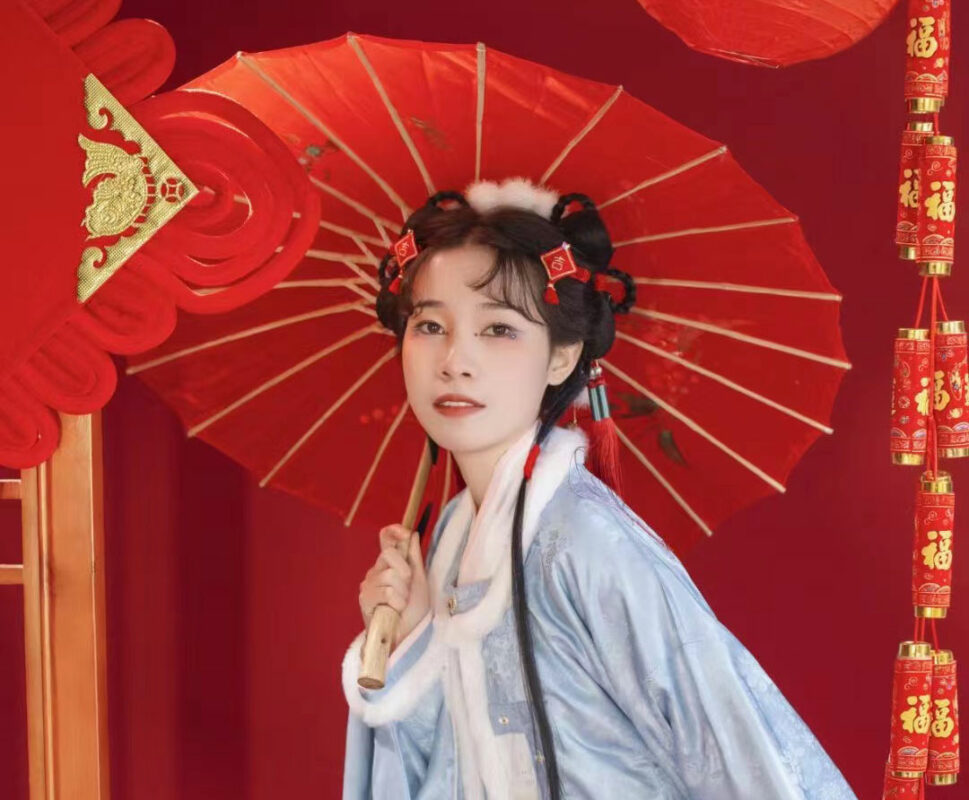Blog
Origin of the Chinese Wedding parasol
Origin of the Chinese Wedding parasol
Origin of the Chinese Wedding parasol
Legend has it that when the Yellow Emperor Yan Di fought Chi You, the chariot of the Yellow Emperor had a “Huagai”, a symbol of authority, and the parasol was developed from the Huagai.According to the ancient book Jade Crumbs, Yun, the wife of Lu Ban, invented the parasol during the Spring and Autumn period, which was ‘made of split bamboo and covered with animal skin, closed like a stick and opened like a lid’. It was a bamboo strip, covered with animal skin, gathered up like a stick and opened like a lid. In other words, like other tools, the parasol was invented out of necessity.According to the ancient book Jade Crumbs, Yun, the wife of Lu Ban, invented the parasol during the Spring and Autumn period, which was ‘made of split bamboo and covered with animal skin, closed like a stick and opened like a lid’. It was a bamboo strip, covered with animal skin, gathered up like a stick and opened like a lid. In other words, like other tools, the parasol was invented out of necessity.
In parasol manufacturing, the rounded surface on which the parasol is held open is called the ‘wall’. It is thought that the earliest parasol walls were made of natural materials such as feathers, animal skins and tree bark, which provided protection from the sun and rain. From the Eastern Han Dynasty onwards, when Cai Lun invented paper, the material used for parasol walls began to change to paper coated with tung oil, and paper parasols began to appear, as the cost of parasol walls was reduced and parasols became more commonplace. During the Tang and Song dynasties, the art of making paper parasols developed considerably, and during this period ‘oilcloth parasols’ made of cotton, satin and silk with a tung oil coating began to appear. In the “Tengong Kaiwu”, it is written that “all parasols and oil fans were made of small leather paper.” By the Ming and Qing dynasties, paper parasol workshops had spread throughout the country.
Around the time of the founding of the People’s Republic of China, paper and oilcloth parasols were still popular in China, and I have seen and used oilcloth parasols since I was a child. In the 1970s, most of the parasols used in rural areas were made of soft plastic, commonly known as “foreign parasols”, and it was an enviable sight for young people to be able to wear a brightly coloured “foreign parasol”. “It was an enviable thing for young people to have a colourful parasol. The oilcloth parasols were not only bulky and heavy, so that your arms got sore after holding them up for a long time, but the open surface was somewhat flat, and the wind and rain made it easy for your legs and even your waist to get wet from the rain. The handle of an old-fashioned oilcloth parasol is usually made of solid wood, while the bones are either wooden or, in most cases, made of bamboo. “There are eight main processes and dozens of smaller processes, including making the parasol bone, the reed plate, the handle, the parasol coat, the parasol frame, fitting the parasol coat, boiling the oil, and oiling the parasol, with tools such as files, hammers, saws, drills, sewing machines, scissors, and measuring tape.” Oiling is the last process, “boiling the raw tung oil, mixing it with a little yellow lacquer, then dipping a brush into the oil to evenly coat the parasol, and then repainting it after it has dried, twice to ensure that the oiled parasol is rainproof and sunproof”.

